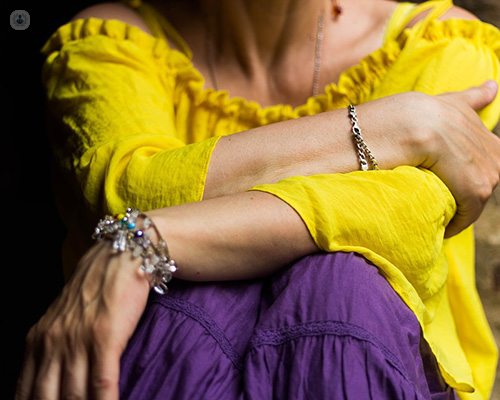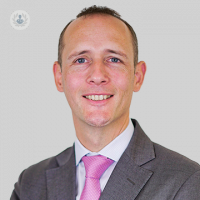What is DIEP breast reconstruction?
Escrito por:Women who have a mastectomy in the course of their breast cancer treatment may decide to have breast reconstruction surgery with the goal of rebuilding the breast. Breast reconstruction can be performed at the time of mastectomy (immediate reconstruction) or later after completing breast cancer treatment. When considering reconstructive surgery, it is important to know the options available to you, which nowadays are many, offering different techniques and results. Mr Kieran Power is a plastic surgeon specialising in reconstructive surgery for breast cancer, in particular the DIEP flap surgical procedure. Here he explains how DIEP flap surgery is performed, and why some women might wish to choose the procedure when considering reconstructive surgery.

What is DIEP flap reconstruction?
The DIEP reconstruction is an operation which involves using the lower tummy fat to make a breast. It uses tissue taken from the lower abdomen, which is then connected to blood vessels in the chest. The procedure can produce a natural-looking and feeling breast, and often, it is possible to rebuild the breast to a similar shape as that which you had before.
What are the advantages of this type of surgery over others?
One of the advantages compared to implants is that later down the line, implants can distort, be uncomfortable, and can need more maintenance, meaning further surgical procedures. Also, an implant reconstruction is unlikely to match your other breast out of clothing. With DIEP reconstruction, you usually have one operation, and perhaps later a smaller operation to do some adjustments. DIEP surgery also provides a soft, natural-looking result both in and out of clothing.
If you have previously had an implant breast reconstruction and it has become tight, uncomfortable or distorted over time, you may also wish to consider a DIEP reconstruction. In this situation, a DIEP reconstruction can improve symptoms and improve the appearance of the breast.
How is the surgery performed?
We use microsurgery to disconnect a portion of tissue and blood vessels from the lower abdominal area, then we carefully connect this tissue to the blood vessels in the chest. The incision on the abdomen will be similar to that of an abdominoplasty, or tummy tuck.
The surgery is performed under general aesthetic, and it can take around 6 to 8 hours for the procedure to be completed. After the operation, you should expect to be in hospital for about 4-5 days.
Are there any risks?
Any surgical procedure carries risk, such as the risk of infection or bleeding, but these are small, especially in the hands of an experienced surgeon. After surgery there will be scarring, both on the breast and in the abdominal area.
In the abdominal area, the scarring is similar to that of a tummy tuck, which sits from hip to hip. This scarring is easily covered and hidden by clothing. In most cases, it fades quite well over time.
Scarring on the breast depends on how the procedure is done. The DIEP procedure can be done immediately, at the same time as the mastectomy, which can reduce scarring. It can also be done as a delayed procedure, meaning that after mastectomy, you later come back and have the reconstruction performed. In this case, the surgery leaves more of a scar behind, and it takes the form of an elliptical scar on the breast. Over time, this scarring will fade in most cases.
The reconstruction can fail in rare cases if the blood supply to the tissue fails, but it is worth noting that failure rates for DIEP flap surgery by experienced surgeons are less than 1%.
How do I know if I am suitable for DIEP reconstruction?
Before surgery, you will be assessed to see which procedure is right for you, and to talk over your options. The ideal candidate for DIEP surgery is in good health, and has existing tissue in the abdominal area – a volume of tissue which is similar to what they want the breast to look like. Patients are usually unsuitable if they are very slim, or in some cases very overweight.
Before the procedure the blood vessels in the abdomen must be checked to see if they are suitable, and a CT angiogram scan will be performed beforehand.
What is the recovery period like?
The surgery is not particularly invasive, but patients need to protect their abdominal wall for about six weeks. This means that you should not be doing anything too strenuous for the first six weeks, but after this time has passed you can begin to return to a normal routine. Discomfort in the abdomen can be felt for about six weeks afterwards, depending on the body type. Most patients are back to normal after about three months.


